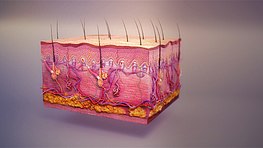
The human body is constantly under siege from a multitude of microorganisms that seek to infiltrate and infect it. Fortunately, the integumentary system, consisting of the skin, hair, nails, and associated glands, serves as the first line of defense against these pathogens. In this comprehensive article, we will explore the remarkable ways in which the integumentary system acts as a formidable barrier to protect the body from harmful invaders.
The Skin: A Multilayered Shield
The skin, the largest organ of the human body, is the primary component of the integumentary system and plays a pivotal role in preventing pathogen entry. It is composed of three main layers: the epidermis, the dermis, and the subcutaneous tissue (hypodermis).
1. Epidermis
The outermost layer of the skin, the epidermis, is responsible for direct contact with the external environment. It consists of multiple layers of tightly packed cells, with the outermost layer primarily comprised of dead cells filled with a tough protein called keratin. Keratin provides structural integrity and waterproofing.
One of the critical features of the epidermis is its rapid cell turnover. New cells are continuously produced in the deepest layer of the epidermis and gradually move towards the surface. As these cells move outward, they harden and eventually flake off, taking any pathogens adhering to the surface with them. This constant renewal of the epidermis helps to shed potentially harmful microorganisms.
2. Dermis
Beneath the epidermis lies the dermis, a connective tissue layer that houses blood vessels, nerves, hair follicles, and sweat and oil glands. The sweat and oil produced by these glands contain chemicals that can inhibit the growth of bacteria on the skin. Additionally, hair follicles are equipped with sebaceous glands that secrete sebum, a natural oil that has antimicrobial properties and helps to keep the skin moist and supple.
Protective Mechanisms of the Integumentary System
The integumentary system employs several defense mechanisms to safeguard the body against pathogens:
1. Physical Barrier
The skin serves as a formidable physical barrier that is not easily penetrated by pathogens. Its layers of tightly packed cells, rich in keratin, create a robust defense against the entry of microorganisms. Furthermore, the skin’s slightly acidic pH (around 5.5) creates an environment that is unfavorable for many pathogens.
2. Chemical Defense
The integumentary system secretes various substances that deter pathogens. These include:
- Sebum: Produced by sebaceous glands, sebum contains fatty acids that create an acidic environment on the skin’s surface, inhibiting the growth of many bacteria and fungi.
- Sweat: Sweat, produced by sweat glands (eccrine glands), contains natural antimicrobial peptides known as dermcidin and cathelicidin. These peptides have the ability to kill or inhibit the growth of bacteria and fungi.
- Lysozyme: Present in sweat, tears, and saliva, lysozyme is an enzyme that can break down the cell walls of certain bacteria.
3. Immune Surveillance
Specialized immune cells called Langerhans cells are present in the epidermis. These cells act as sentinels, constantly patrolling the skin to detect and respond to invading pathogens. When Langerhans cells encounter a pathogen, they trigger an immune response, recruiting immune cells to the area to combat the infection.
Wounds and Pathogen Entry
While the integumentary system is highly effective at preventing pathogen entry, it can be compromised by injuries such as cuts, burns, or insect bites. When the skin is breached, pathogens can enter the body more easily. In response, the body initiates an immune response to control and eliminate the invaders.
Conclusion
The integumentary system, with the skin as its chief defender, forms an integral part of the body’s immune defense. Its multilayered structure, along with chemical defenses and immune surveillance, provides a formidable barrier against pathogens seeking to enter the body. This system operates tirelessly, day and night, to keep harmful microorganisms at bay, underscoring the importance of proper skincare and wound management in maintaining overall health.



